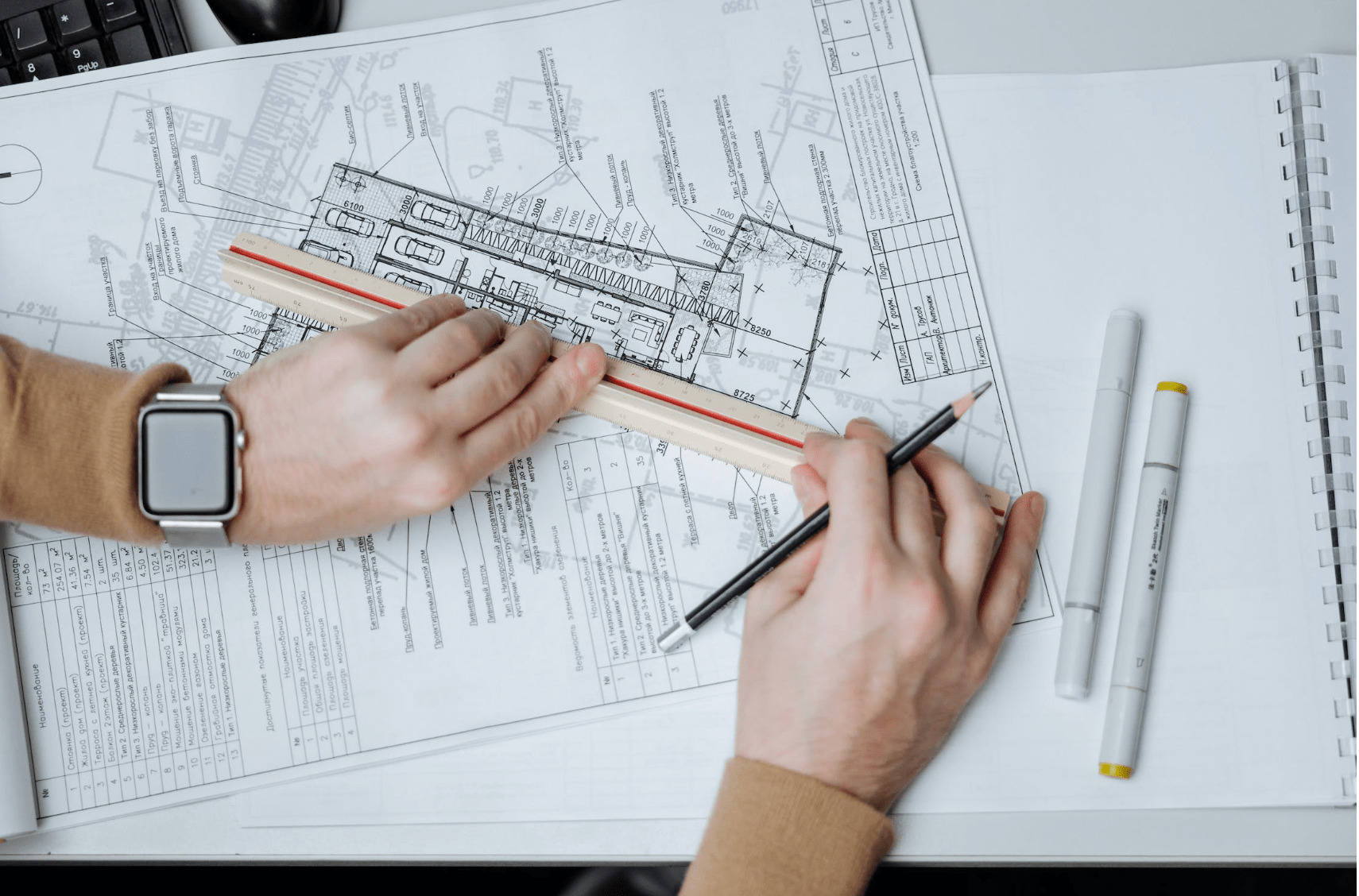Recognizing the Diverse Profession Paths Available for Aspiring Architect
As an aspiring Architect, you have a world of career paths waiting for you. Each course uses unique difficulties and possibilities to use your creative thinking and technological know-how. Whether you're attracted to typical design or the nuances of lasting layout, there's a specific niche that straightens with your interests. Recognizing these diverse choices can shape your specialist trip, yet which instructions will you select to discover first?
Traditional Design: Creating Structures and structures
Conventional style concentrates on developing structures and frameworks that mix performance with aesthetic charm. Your layouts can show cultural heritage, showcasing regional traditions while fulfilling modern-day demands.
You'll develop skills in preparing, model-making, and website evaluation, allowing you to envision and connect your concepts successfully. Involving with clients, you'll require to recognize their vision and translate it into possible styles.
Moreover, building codes and sustainability techniques are necessary in your job, guaranteeing your structures are secure and eco-friendly. As you expand in your career, you'll find opportunities in residential, industrial, or perhaps repair projects, each offering distinct challenges. Accepting standard style paves the method for a satisfying profession that admires the past while forming the future.
Urban Planning: Forming Areas and Public Spaces
As an ambitious Architect, you can play a vital duty as a metropolitan planner, transforming exactly how communities operate and engage. By utilizing neighborhood engagement strategies, you'll guarantee that residents have a voice in shaping their setting. And also, integrating lasting style concepts will help develop spaces that not only fulfill today's demands however also shield the future.
Role of Urban Planners
While lots of might consider architects as the single enthusiasts behind buildings, urban coordinators play an essential role fit the broader landscape of communities and public spaces. They analyze land use, zoning legislations, and neighborhood requires to create lasting settings that improve lifestyle. By working together with different stakeholders, you'll assist design parks, transportation systems, and domestic areas that promote social interaction and access. Urban organizers additionally concentrate on ecological factors to consider, ensuring that developments integrate environment-friendly rooms and support biodiversity. Your know-how in spatial layout and area dynamics permits you to picture future development while protecting social heritage. In this essential duty, you'll straight affect exactly how people experience their environments, making every project a possibility for favorable adjustment.
Neighborhood Interaction Methods
Efficient community interaction techniques are vital for city planners to assure that the voices of residents are listened to and valued in the preparation process. To foster significant discussion, you must focus on open discussion forums and workshops where area participants can reveal their ideas and concerns. Usage studies and social networks to reach a wider target market, guaranteeing diverse perspectives are included. Collaborating with neighborhood companies can enhance trust fund and help with deeper connections. It is necessary to give clear info regarding decision-making processes and proposed projects, allowing homeowners to feel enlightened and encouraged. By proactively integrating and listening responses, you'll produce spaces that show the neighborhood's requirements, ultimately causing more lasting and effective urban settings. Accept transparency and constant discussion for lasting influence.
Lasting Style Principles
When creating urban spaces, incorporating sustainable layout principles is vital for developing environments that grow both ecologically and socially. Think about integrating green spaces, like parks and yards, to boost biodiversity and improve air top quality.
Designing with water preservation in mind is also vital-- think of rainfall gardens and permeable surface areas to handle stormwater. Involving neighborhood members throughout the preparation procedure guarantees that the rooms you develop satisfy their requirements and encourage social interaction. By welcoming these principles, you'll add to vibrant, sustainable city landscapes that benefit every person.

Landscape Architecture: Producing Lasting Outside Environments
As you discover landscape architecture, you'll uncover vital style concepts that create gorgeous and practical exterior rooms. Sustainable methods play a crucial role in making sure these settings flourish while decreasing ecological impact. And also, you'll find a range of career chances that permit you to make a genuine difference in just how people connect with nature.
Design Concepts in Landscape
Recognizing design principles in landscape style is important for producing lasting exterior atmospheres that balance with nature. You'll need to ponder components like equilibrium, range, and proportion to ensure your designs feel cohesive and inviting. Including indigenous plants not just improves biodiversity but also minimizes water usage, making your landscape durable. Consider the circulation of area and exactly how people communicate with it; pathways and seating areas should welcome exploration and leisure. Additionally, focus on seasonal modifications, developing with materials that enhance the surroundings year-round (Architect). By focusing on sustainability and looks, you can produce outdoor spaces that improve the area and promote wellness. Welcoming these concepts will certainly establish a solid structure for your occupation in landscape style.
Lasting Practices Introduction
Sustainable practices in landscape style not only concentrate on aesthetics yet also focus on environmental health and source conservation. By incorporating native plants, you improve biodiversity and reduce the requirement for chemical fertilizers and pesticides. Executing effective watering systems aids preserve water and lessens drainage, securing neighboring ecosystems. You can create rooms that promote dirt health and wellness, such as utilizing organic materials and practicing permaculture principles. In addition, incorporating green framework, like rain yards and porous sidewalks, aids in stormwater management and lowers urban warmth. When you produce outdoor environments with sustainability in mind, you add to a much healthier planet and offer spaces that foster neighborhood link. Eventually, these techniques guarantee your layouts profit both people and the setting for several years to find.
Profession Opportunities Exploration
With a solid structure in lasting practices, landscape style uses a range of career courses that permit you to make a significant effect on the setting. Urban coordinators often team up with landscape architects to create eco-friendly spaces in metropolitan setups, enhancing city livability. If you're enthusiastic regarding education, take into consideration becoming a landscape architecture instructor, inspiring future generations.
Sustainable Layout: Concentrating On Eco-Friendly Practices
As you explore your job in design, embracing environmentally friendly methods can set you apart in a competitive area. Sustainable layout concentrates on developing buildings that minimize environmental impact while boosting occupant well-being. By incorporating renewable materials, energy-efficient systems, and sustainable building techniques, you'll contribute to a greener future.
Beginning by obtaining expertise of green accreditations like LEED or BREEAM, which can reinforce your credentials. Take into consideration exactly how all-natural light, ventilation, and thermal performance can optimize style. Collaborate with designers and ecological experts to introduce solutions that decrease waste and save resources.
Don't forget the importance of area participation-- engaging neighborhood stakeholders can motivate styles that integrate with the setting. As customers significantly focus on sustainability, your expertise in environmentally friendly methods will certainly not just attract projects yet likewise meet your interest for liable architecture. Accept this vital aspect of the career, and see your career prosper.
Historical Conservation: Protecting and Bring Back Cultural Heritage
While you begin on your building trip, take into consideration the vital duty of historical preservation in keeping visit our website our social heritage. This area focuses on the security and remediation of substantial structures, sites, and frameworks that inform the stories of our past. By taking part in historical preservation, you'll assist protect the building legacy that forms area identification.
As a historic preservation Architect, you'll examine historic relevance and analyze the problem of structures. You'll function carefully with chroniclers and preservationists to ensure authentic repair techniques are utilized. This career path enables you to blend creative thinking with research, enabling you to make services that appreciate initial products and workmanship.
Your work not only adds to sustainability by recycling existing structures but additionally promotes a sense of satisfaction within areas. Embracing this course will certainly assist you become a guardian of background, protecting the stories and visual appeals that enhance our lives.
Inside Design: Enhancing Indoor Spaces
Historic conservation and indoor architecture both share a dedication to improving the built setting, yet they concentrate on various elements. While historic conservation emphasizes keeping a structure's historic and cultural worth, indoor style nos in on enhancing indoor spaces for performance and visual appeals.
As a hopeful Architect, you'll discover that interior design permits you to blend creative thinking with technical abilities. You'll create areas that not only look great but additionally promote convenience and effectiveness. This area involves recognizing how light, shade, and materials interact within an area, influencing mood and usability.
You'll deal with various tasks, from household homes to business offices, making sure that each atmosphere meets the requirements of its passengers. By prioritizing individual experience, you can transform insides right into practical and motivating spaces, making a considerable effect on just how people communicate with their surroundings. Welcome the possibility to enhance interior atmospheres and shape the method individuals live and function.
Industrial Design: Combining Functionality With Aesthetic Appeals
Commercial layout plays a vital duty in developing items that effortlessly blend aesthetics with performance, ensuring that what you utilize daily is not only aesthetically attractive but additionally useful. As an aspiring Architect, you can involve on your own in this area, concentrating on developing every little thing from furniture to consumer electronic devices. Your job involves comprehending user demands, products, and manufacturing processes, enabling you to create ingenious remedies that enhance daily see this page experiences.
In industrial style, you'll usually collaborate with marketers, producers, and engineers, making certain that your designs are not just beautiful however likewise practical. This occupation course uses a vibrant setting where creativity satisfies practicality, making it a rewarding choice for designers interested in shaping the products of tomorrow.
Frequently Asked Inquiries
What Educational Qualifications Do I Need to Come To Be an Engineer?
To become an engineer, you'll require a professional degree in style, normally a Bachelor's or Master's. In addition, you'll need to complete an internship and pass the Architect Enrollment Evaluation to exercise legitimately.
Exist Certification Demands for Various Building Career Paths?
Yes, there're accreditation needs for different building paths. Architect. You'll need to pass tests, complete internships, and occasionally go after specialized training, depending upon your selected focus, like landscape style, city style, or historic preservation
What Software Program Skills Are Essential for Designers Today?

How Can I Gain Practical Experience While Studying Design?
You can get practical experience by interning at building firms, joining design competitions, offering for community tasks, or working together with classmates visite site on real-world projects. These chances improve your skills and construct valuable connections in the industry.
What Task Opportunities Exist Outdoors Standard Style Firms?
You can discover numerous job possibilities outside typical style firms, like urban planning, interior decoration, landscape architecture, construction management, property advancement, or also functions in sustainability consulting. Each deals special obstacles and incentives.
Whether you're drawn to typical design or the subtleties of sustainable layout, there's a niche that straightens with your interests.When developing city spaces, including sustainable design concepts is crucial for developing environments that flourish both environmentally and socially.As you discover landscape architecture, you'll find vital layout principles that produce functional and gorgeous outdoor spaces.Comprehending style concepts in landscape architecture is essential for creating lasting outdoor atmospheres that balance with nature.In industrial layout, you'll commonly collaborate with suppliers, designers, and marketers, making certain that your layouts are not only beautiful but likewise feasible.